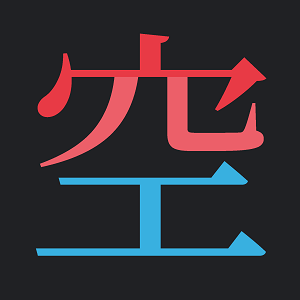空
부수: 穴
획수: 8획
空 has the meanings empty, space and air/sky.

X = semantic + phonetic
• 穴 originally depicted a cave-dwelling and represents the meaning ’empty space’.
• 工 depicts a construction tool, but is used for its sound.
Some scholars suggest 工 (tool, work) represents ‘hollowing-out’ an empty space, such as a pit or cave 穴.
Evolution:
空 = empty ➔ space ➔ air/sky
穴 = 宀 + 八
• 宀 is a distortion of some earlier form.
• 八 is a distortion of some earlier form.
Mnemonic
Imagine you’re lost in Siberia and need to build a snow cave 穴 to survive the night. You create an opening 八 and then hollow out the insides with your axe 工, making sure the ceiling 宀 is the right height. As you settle inside, the still air 空 warms up and keeps you alive.
Vocab
| 空腹 | 공복 | empty stomach |
| 空席 | 공석 | vacant seat |
| 空冊 | 공책 | notebook |
| 空白 | 공백 | blank space; emptiness |
| 眞空 | 진공 | vacuum |
| 空想 | 공상 | idle fantasy |
| 空짜 | 공짜 | freebie |
| 空돈 | 공돈 | easy money |
| 空虛感 | 공허감 | emptiness (feeling) |
| 空然히 | 공연히 | needlessly; uselessly |
| 空間 | 공간 | space (spatial) |
| 空氣 | 공기 | atmosphere; air |
| 蒼空 | 창공 | blue sky |
| 空港 | 공항 | airport |
| 空軍 | 공군 | air force |
| 上空 | 상공 | midair; sky above |
| 領空 | 영공 | territorial airspace |
| 空襲 | 공습 | air raid |
| 空輸 | 공수 | air transport; airlift |
| 虛空 | 허공 | air surrounding oneself |
| 空中 | 공중 | air distant from oneself |
Other resources
Image searches
Google
Bing
Yahoo Japan
Baidu (click 图片)
Sogou
Pinterest
Flickr
CJKV
CJKV Dict
Wikitionary
Unihan Database
Korean
Chinese
Written Chinese
Arch Chinese
ZDic
CC-Canto
Chinese Text Project
The Chinese University of Hong Kong (etymology)
Chinese Boost
Japanese
Takoboto
Jisho
JLearn.net
Sakura
The Kanji Map
Sentence Search
Immersion Kit
Vietnamese
Bibliography
— Daum 사전, [s.v. 空].
— Grant, B.K. (1982). A Guide To Korean Characters: Reading and Writing Hangul and Hanja, [s.v. 544]. Seoul: Hollym.
— Outlier Dictionary of Chinese Characters, [s.v. 空, 穴, 宀, 八, 工].
— Seely, C., Henshall, K.G., & Fan, J. (2016). The Complete Guide to Japanese Kanji: Remembering and Understanding the 2,136 Standard Japanese Characters, [s.v. 17]. Singapore: Tuttle Publishing.